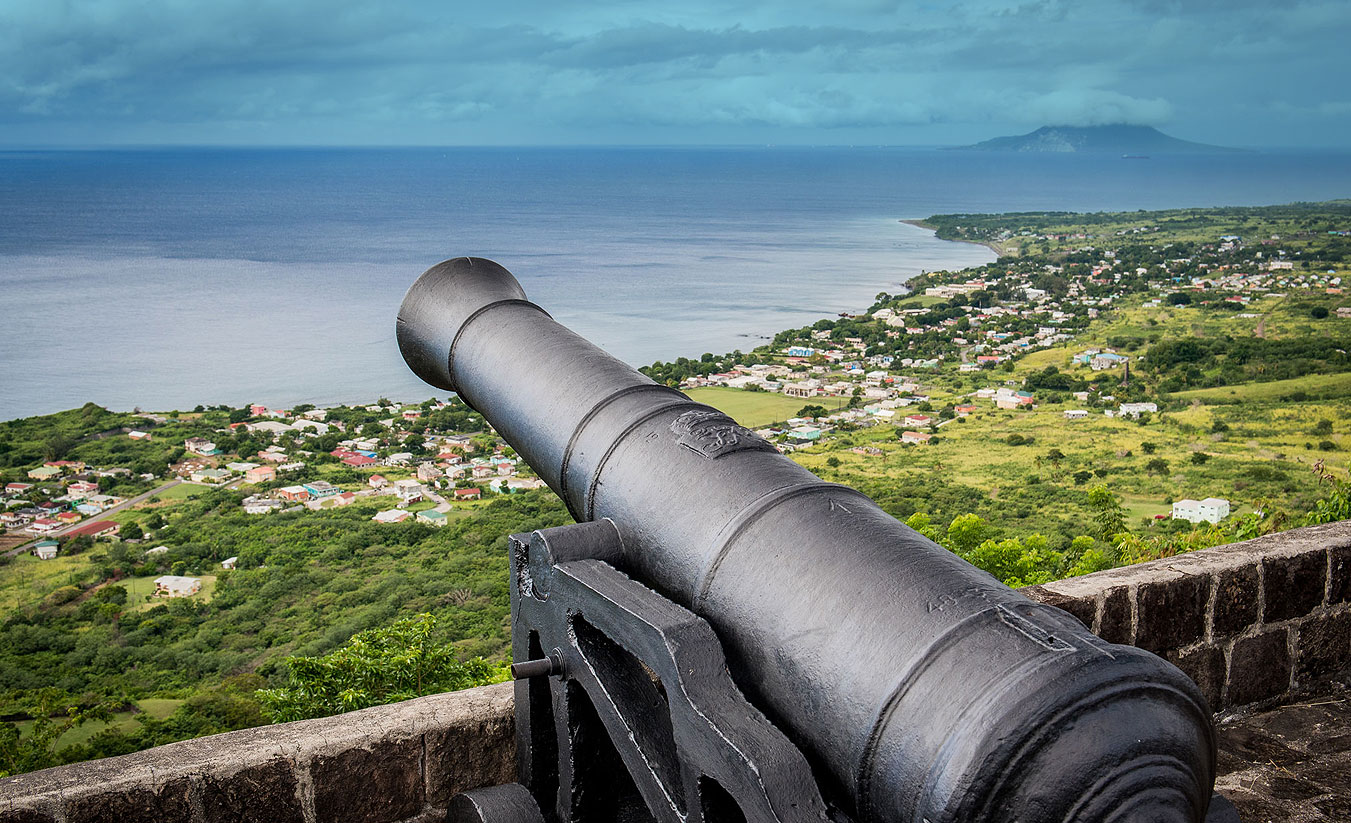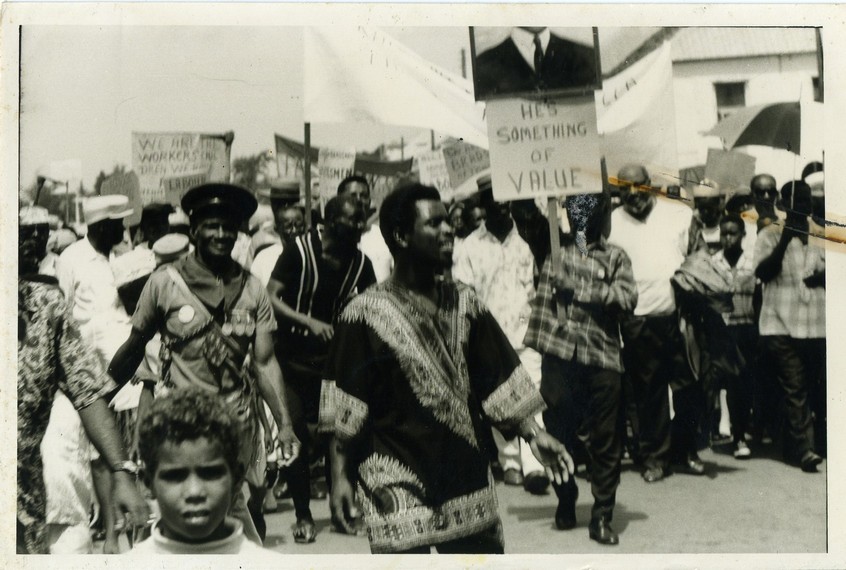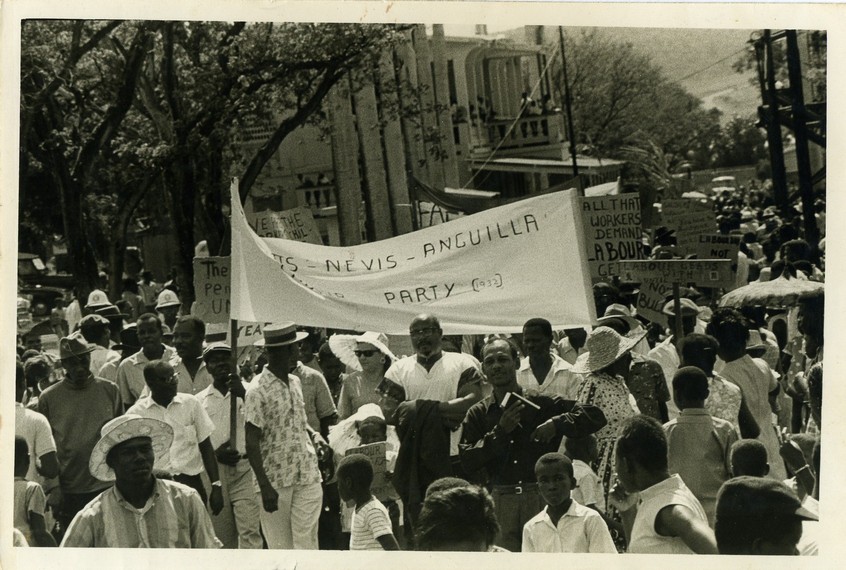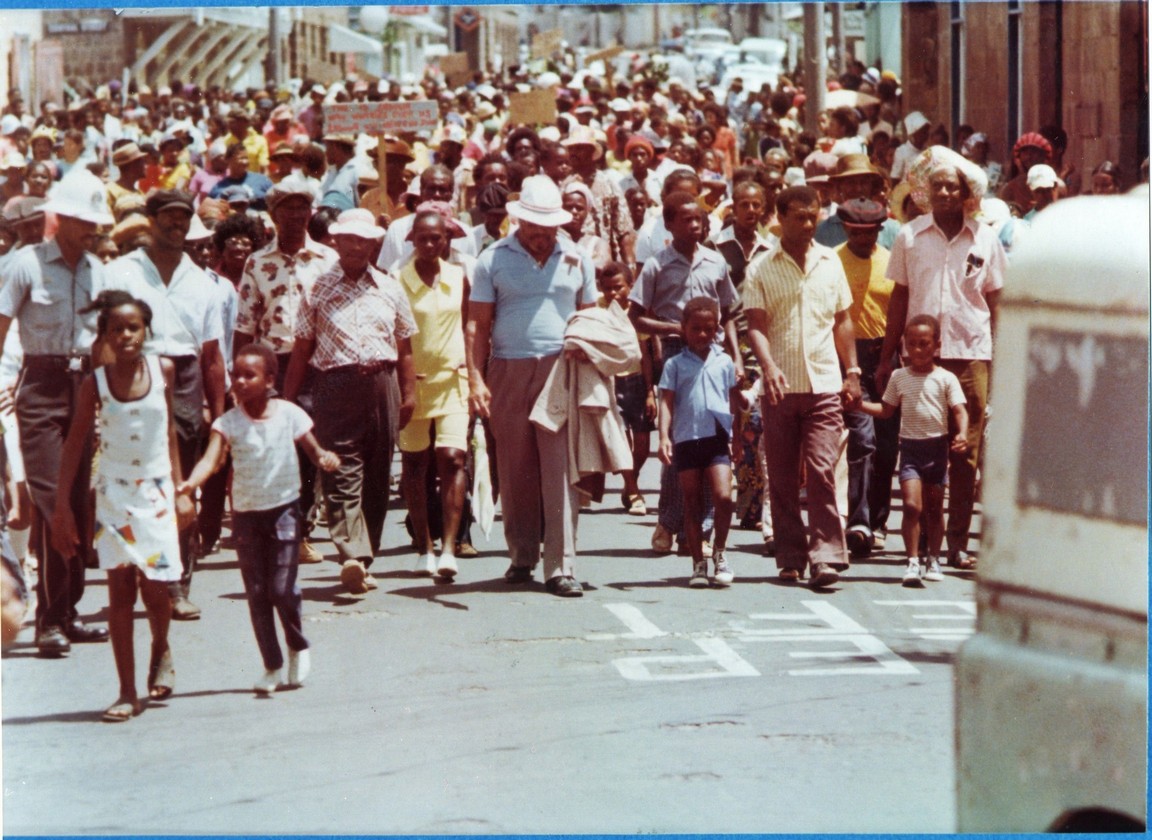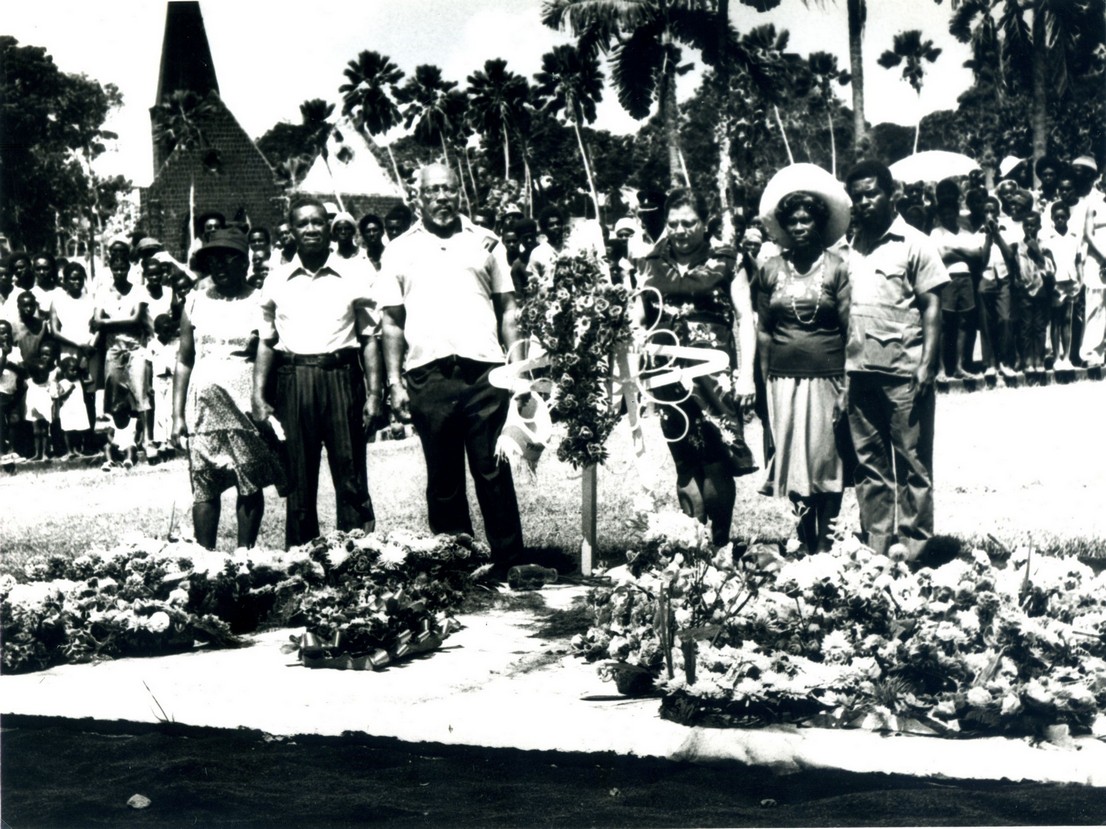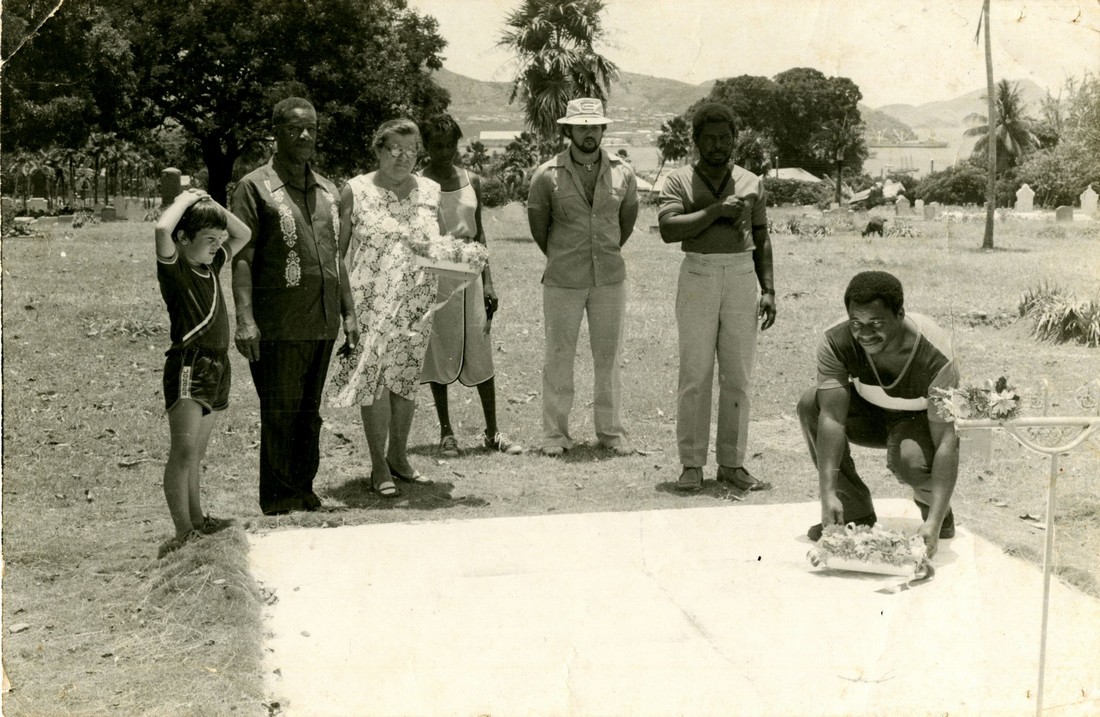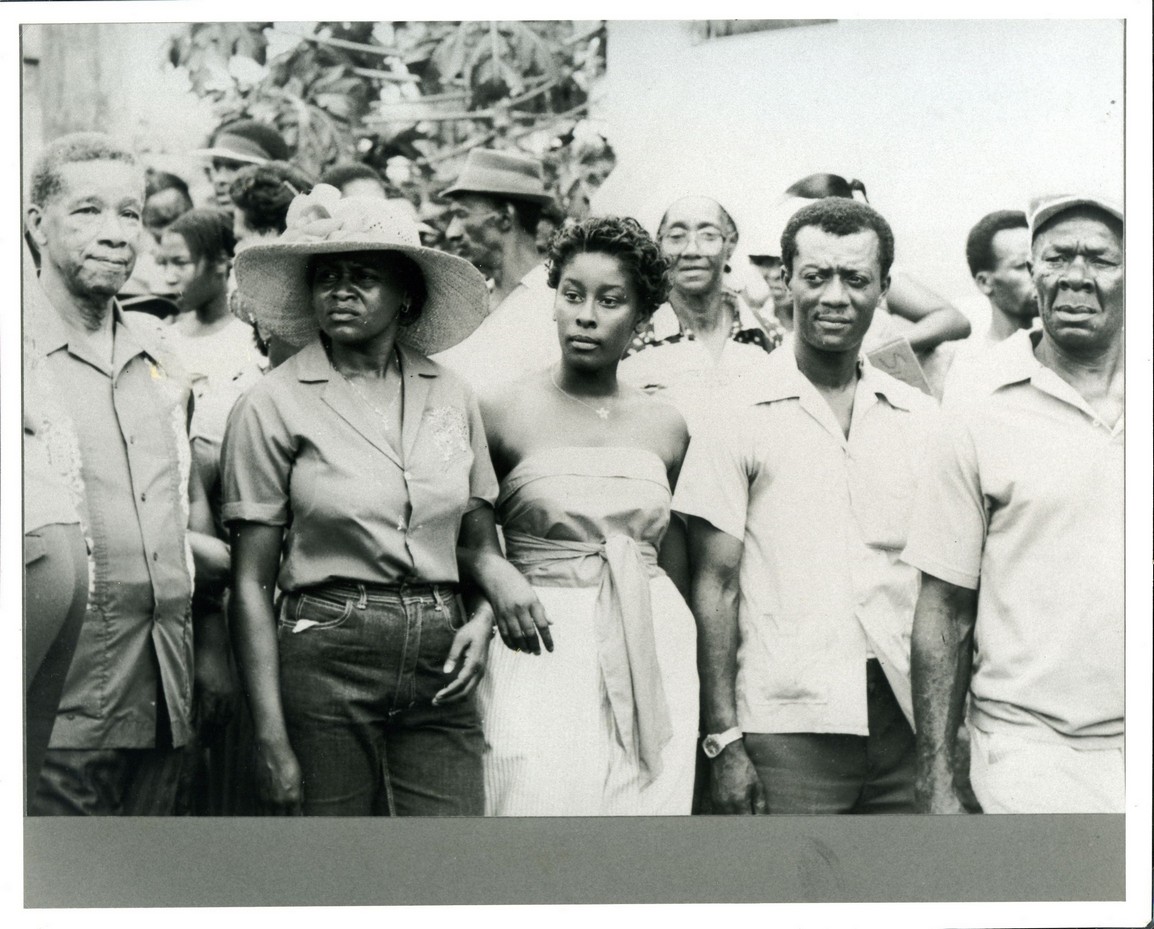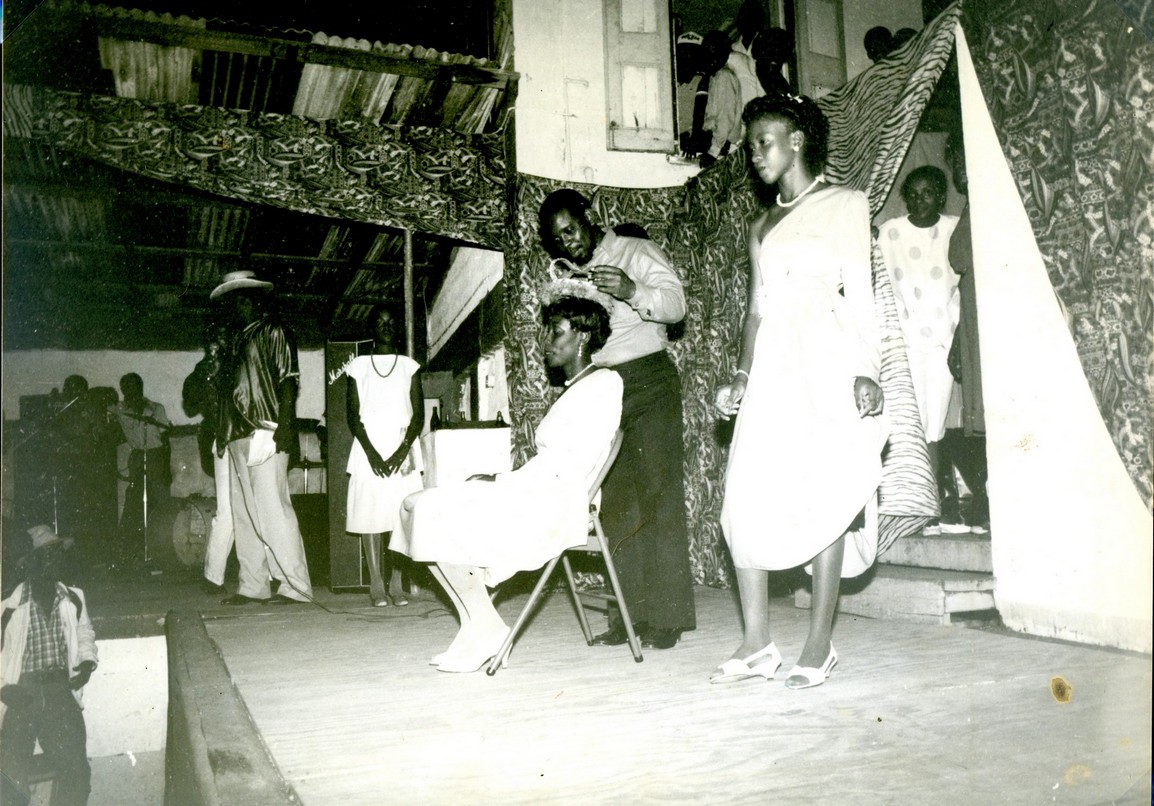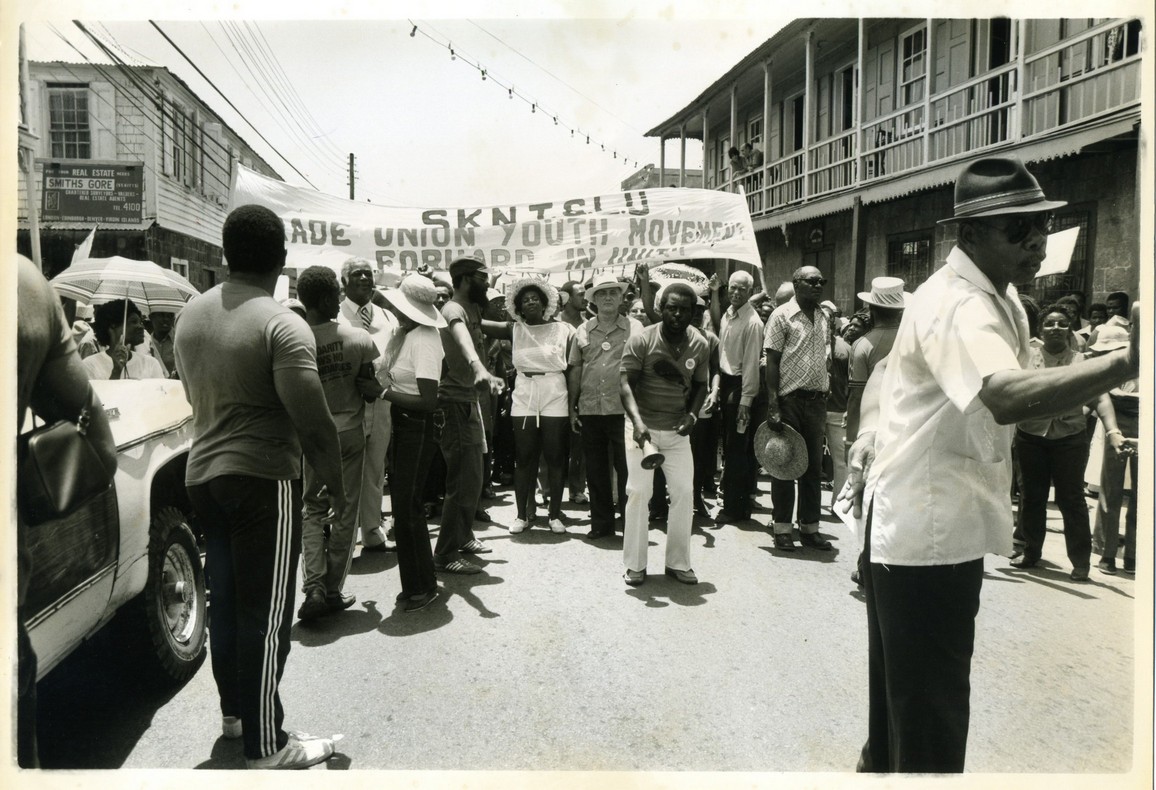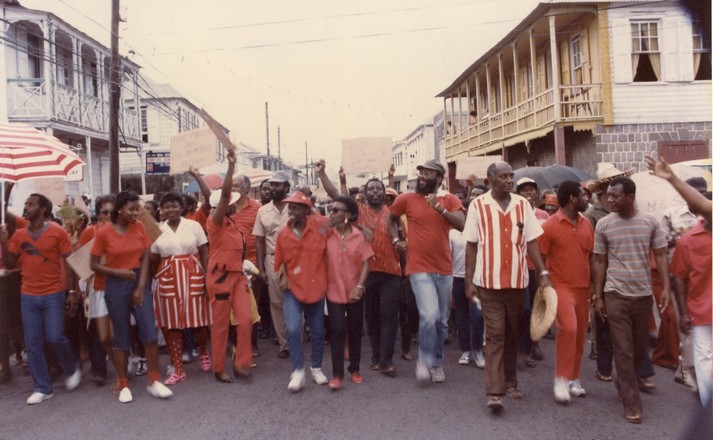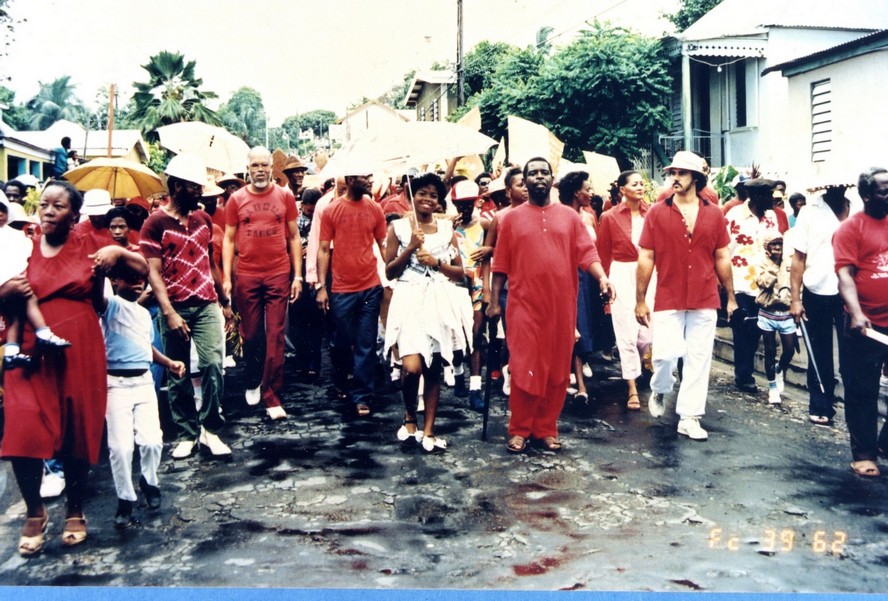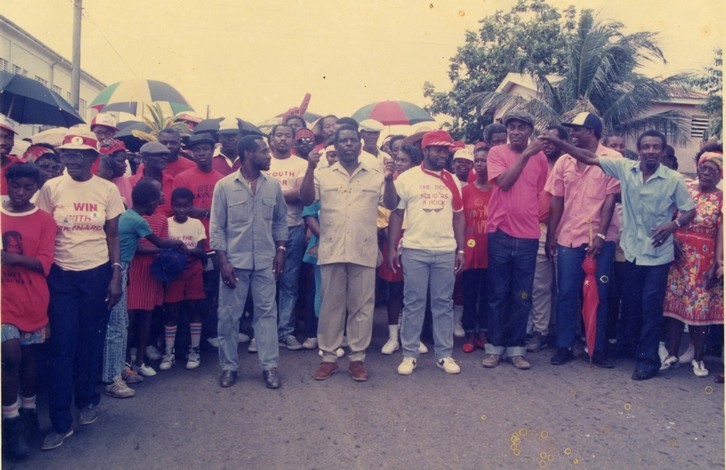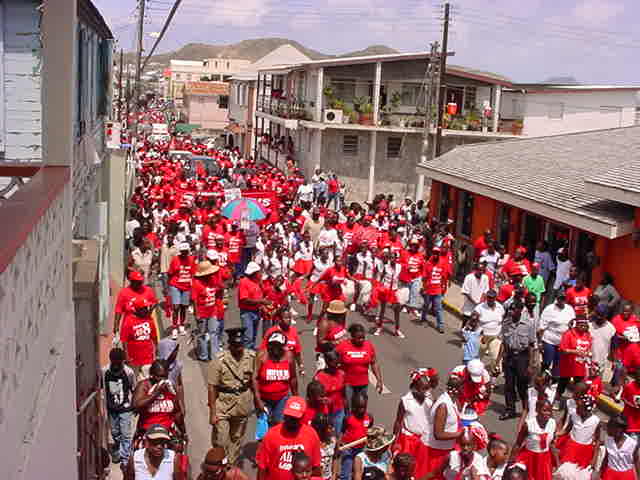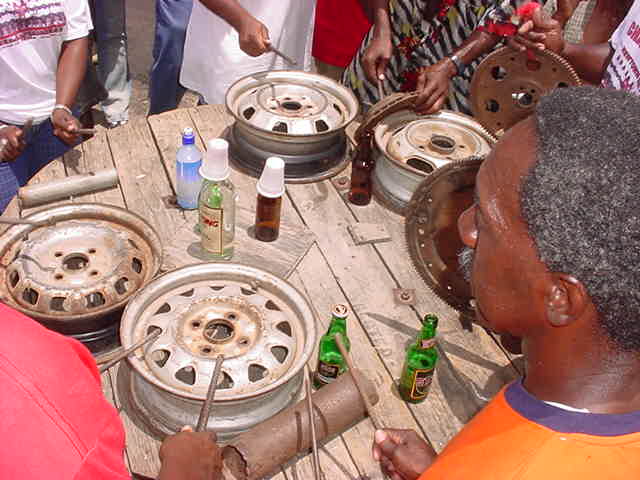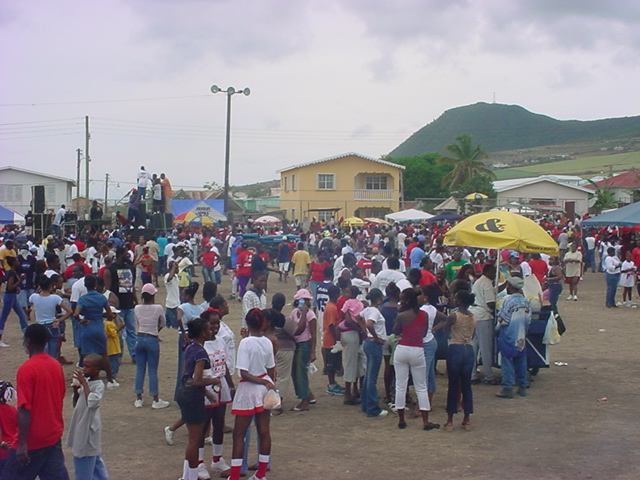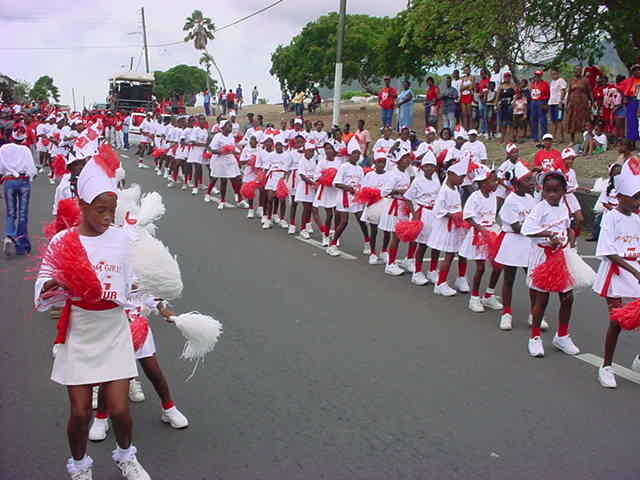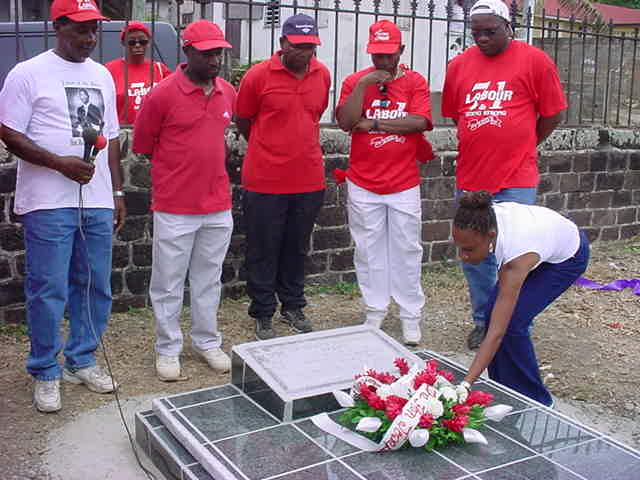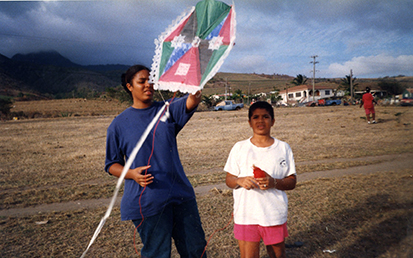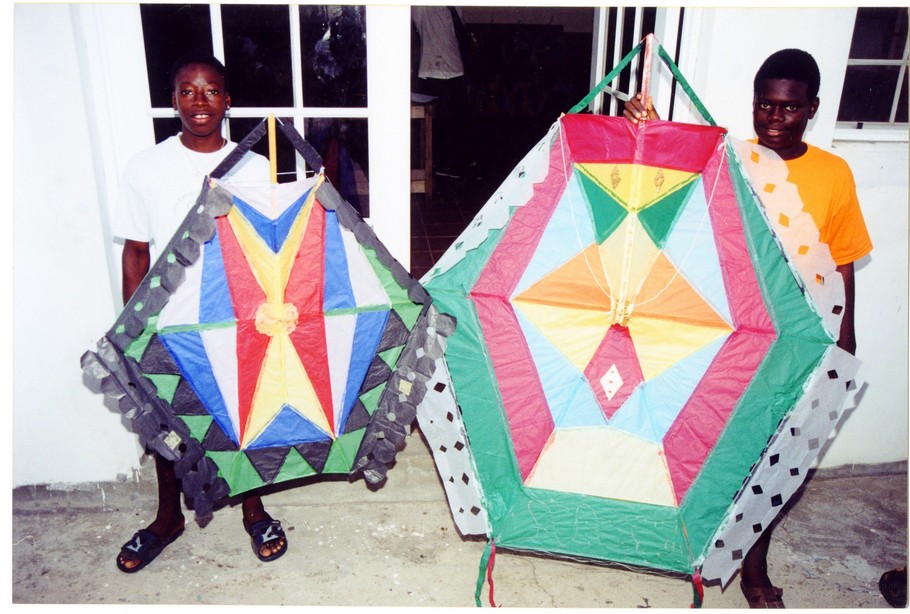Flood of 1880
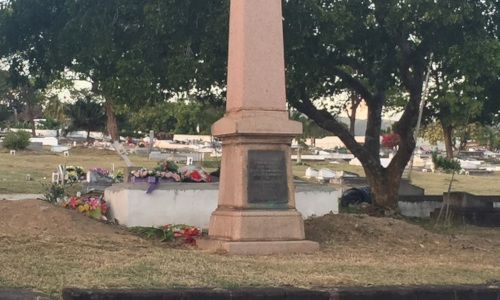
Sunday, 11 January 1880 was described as a fine day with some scattered showers. At about 5.00pm the atmosphere became quite warm compared to the previous few days. Then at about 9.00pm an intense cold set it. There was a light shower which quickly came to an end. By 11.00 pm the rains started falling and continued unabated till 3.00am of 12 January. The night was very dark.
The flow of water in the streets was quickly augmented by the overflowing of the Fountain and Olivees rivers. The water from Fountain river inundated part of College Estate while that from the Olivees River ran through Shadwell. The water left deep furrows in the Monkey Hill and Olivees mountain.
In College Street, Basseterre, protective walls were broken down by the torrent. The property of Dr. A P Boon and his neighbours was inundated with gut sand. David Taylor, a carpenter his wife Esther, Esther’s mother and the couple’s nine children were all lost in the flood as was the family of another carpenter, Frank Burgundy and his wife Henrietta.
At Kings Ground, west of the new market (on Central Street between Westbourne Ghaut and Prickly Pear Alley) “once a hot bed of vice … is now the scene of the greatest confusion and woe.” The western wall of the market was badly damaged. The house of Lazarus Titley was carried off its foundation and that of Samuel R Carey was annihilated. Carey was trying to get his wife and daughter to safety when they were both carried away by the rushing waters. John Thomas Crooke had just rescued a friend when he lost his footing and was also carried away.
At Gut Market (Market Street), Elizabeth Somarsall and her son had a narrow escape but lost their house which in the past had endured other floods. Their loss was estimated in the hundreds of pounds as was that of Mrs. Joseph Parris.
The business premises of W A Cock, J Lagois, A Mondesire, Wade & Abbott, Thomas McNish and G W Bennett and Co. were all badly damaged. The Square was covered in mounds of sand in which a number of dead were found. Possibly these persons were trying to make their way to the Court House to find safety. The Bay Front was littered with hogsheads of coal, boxes, puncheons, barrels and other items that once held merchandise. The Treasury Building, and the wharves as well as Mr Wattley’s business were badly affected.
Margaret Vanderpool and her son, George lived on the Bay. In the flood, their little house was washed away with them in it. The boy had learnt to swim with his friends in Irish Town and was able to hold on to a door that was passing them in the sea. He took it to his mother and both of them held on to it while the current carried them out to sea. As they drifted past Old Road, she was rescued by James Bristol and some others. She was about 5 miles from land. She told them about her son and Bristol took off again in search of him. He picked up an exhausted young lad who immediately asked about his mother and when he said that she was pregnant, the boatman knew he had found Margaret’s son. Two days later Margaret gave birth to a baby girl she called Flodine. Margaret and George were among the lucky ones who were rescued at sea. Others were not and their bodies washed up at St. Eustatius where the Governor ordered that they should be given a Christian burial.
Most of the victims were from Basseterre. The Moravian Church in Basseterre has a memorial to the victims that were part of its congregation. A pink obelisk at Springfield cemetery was erected in memory of all those who had lost their lives during the catastrophic flood of 1880.
Cholera Epidemic 1854
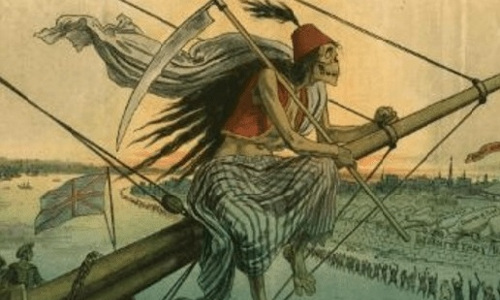
Cholera is an infectious disease of the small intestine that causes severe watery diarrhea over a few days. It , can lead to dehydration and even death if untreated. It is caused by eating food or drinking water contaminated with a bacterium called Vibrio cholerae.
In 1850, cholera made its presence felt in Barbados and St. Vincent and by 1853 it was in Nevis. St. Kitts attempted to control the flow of people from places where the disease had made its appearance.
Dr. Thomas Cooper was sent to St. Kitts from Barbados as Medical Inspector General. According to his report, the first publically announced case of a cholera fatality had been that of William Alexander Titley of New Town who had arrived on the steamer Conway from England. Cooper, who seemed to think that no such disease could come from England, was quick to point out that there had been five earlier deaths which he felt were also due to cholera. The epidemic lasted for 9 weeks with its peak period falling between the 18th Nov and the 6th Dec 1854 when over a hundred deaths were registered every day.
The death toll was as follows
St. George, Basseterre 1450
St. George, Salt Pond 33
St. Peter 315
Palmetto Point 164
Middle Island 177
Old Road 295
Sandy Point 564
St. Paul’s 116
Dieppe Bay 227
Nichola Town 214
Cayon 365
In all 3920 persons lost their lives during that period. Cooper notes that the majority of deaths occurred at the Cholera Hospital which was located in Basseterre. He also noted that after the first 10 days of the disease being at Salt Pond, the people who lived in the area left the area for Basseterre because they could not get medical attention in that isolated area.
Commenting on the course of the disease, Cooper noted the efforts of the clergy to assist persons in their congregation. He also noted the reluctance of many submit to medical attendance preferring “to quck themselves with herbs and barks.”
The Board of Health had been asked to recommend a treatment that could be made available free of charge especially for persons who could not get to a medical practitioner immediately. They circulated a handbill which recommended “a pill containing calomel, capsicum and one grain of opium, together with a mixture of laudanum, spirits of camphor, sulpheric ether and compound spirits of ammonia in equal parts.” Although it soon became clear that the concoction made matters worse, the handbill was not recalled. To make matters worse a quack called Secchi arrived in St. Kitts with what he called Cholera Elixir. Cooper had to take action against both “remedies”
Basseterre in particular was not prepared for the devastation that the disease brought with it. The Cunningham Hospital was fairly new but it would not have been able to cope with the numbers of patients. A separate hospital was set up at Springfield and burials took place at the Crawl – the piece of land below the Cunningham, the southern most part of Greenland estates – which acquired the name Cholera Ground. Prisoners were employed to dig the trenches to receive the dead.
Dr. Cooper’s report made note of the lack of protein in the diet of the general population on St. Kitts, the need for a good supply of water, the crowded living conditions in the town and the poor material used for the construction of houses, the insufficiency of the medical service, The epidemic highlighted the urgency for dealing with the water situation in Basseterre, the allotment of land for a proper cemetery, and the need for keeping records relating to population increase/decrease.
While Dr. Cooper was speculating as to what could have caused the out break in St. Kitts, Dr. John Snow after rigorous observations in London came to the conclusion that cholera was spread via contaminated water.
Labour Day - first Monday in May
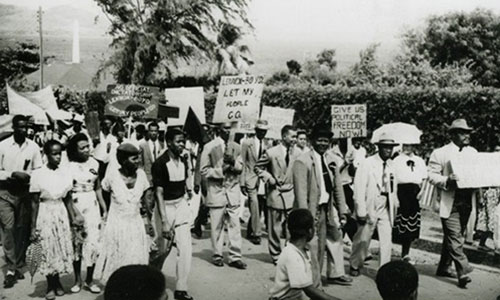
The afternoon events at the park were well attended. The Union’s Entertainment Committee organised a Steel Band Competition. Esso, Wilberforce, Amstel, Boston Braves, Battalion and Invaders competed with the last emerging as the winners. Lord Croft sang a special Labour Day Calypso. The bands then played on the streets of Basseterre.
Looking to the future, the Messenger’s editorial declared, “The idea is not yet as firmly rooted as it might have been, but these small beginnings usually make great endings, and there is every indication that Labour Day will increase in force and popularity as times go by.”
Those hopes were not unfounded. Over the year the march has grown. It is especially well attended in years of political stress. There have been changes too. A queen show is held in the days preceding Labour Day. This used to take place at Masses Yard, now it happens at Warner Park and the contestant chosen as Miss Labour is expected to attend the March. Labour Day itself starts with the current party and union leaders visiting the graves of departed leaders of the Labour Movement. Most of those who attend now wear red, the colour associated with the Labour Party and instead of ending at Warner Park, the March now ends at the Patsy Allers Playing Field in St. Johnston Village.
The Christmas Sport - last week of December
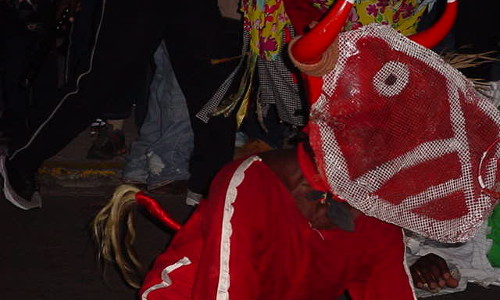
The Christmas Sports takes place in the days between Christmas and New Year. These are street performances. However some elements on the sport, particularly the Masquerade, is used as cultural performances throughout the year.
THE BULL
is based on a story that had its origins in St. Kitts itself. It is said that Arthur Davis, the owner of Belmont estate, and brother of Basil Davis, Manager of the Sugar factory bought a young bull for breeding purposes and put it in the care of some farmhands. The bull was a fierce one and one day almost gored one of its minders. The man stabbed it and thinking that he killed it called Mr. Davis who brought in a vet. The vet treated the bull and it survived.
The cast consists of Bull, Davis, Sweetie, Oak, Dr. Pick-me-Heel, Backanash, Dog, and Police Sergeant. The street performance is accompanied by tambourine, chopping reel, bar-horn, triangle, shack pan and bamboo fife. The performance however mimics some of the bible plays that became popular in the late 18 and 19th century.
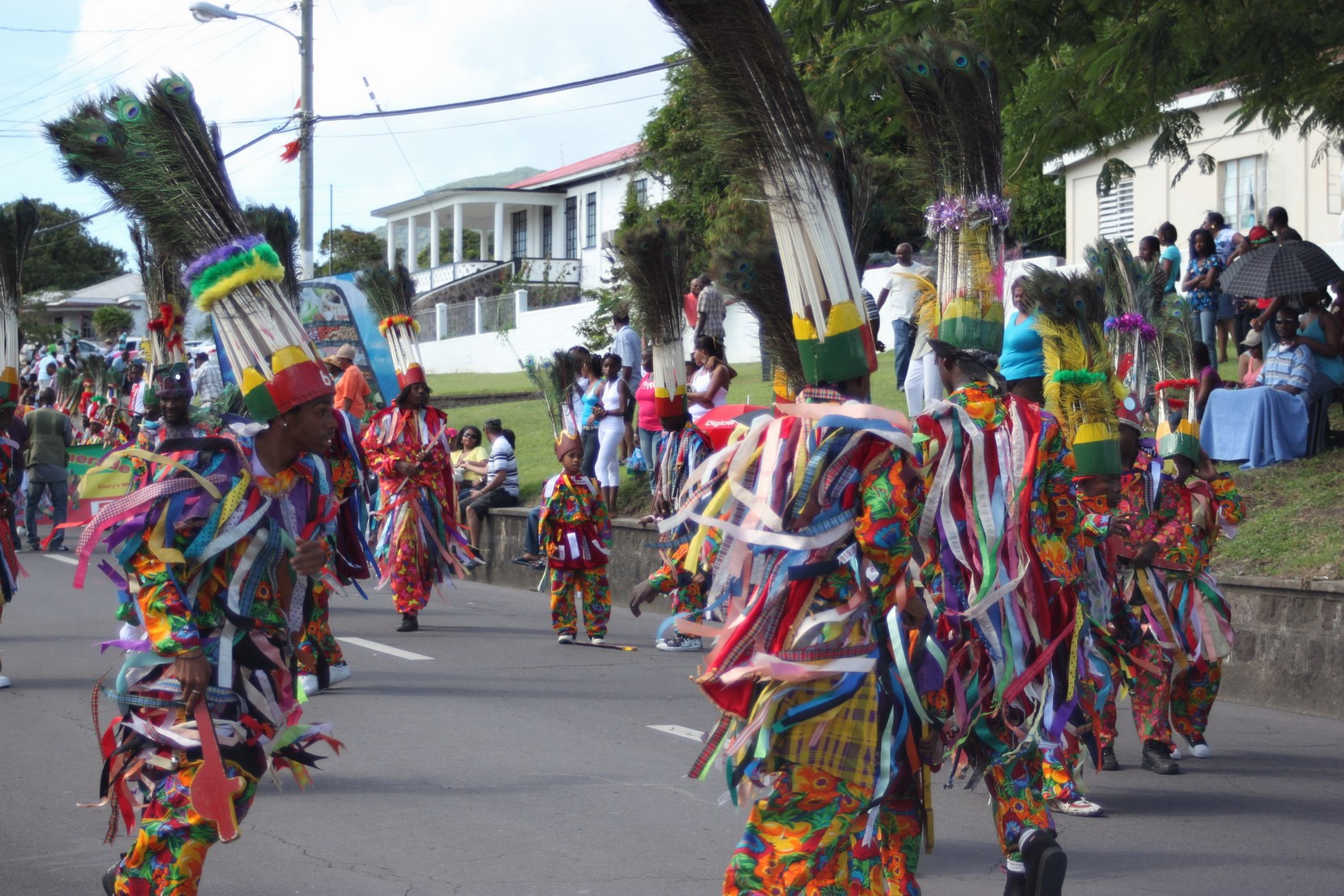
THE MASQUERADE
is the performance that is the most popular today. It is colourful, full of movement and very entertaining. It is definitely a mix of African and European genres. There are usually 10 to 15 members to this group ranging in age from six to sixty years, led by a Captain. The dress consists of multicoloured shirts, a skirt or apron over breeches that were once knee length. All is decorated with a variety of ribbons, mirrors and jingle-bells. The face is covered by a pink-faced wire mask and on their head, the performers wear a crown of peacock feathers. They also carry a hatchet. The accompanying music is produced by a bamboo fife, kettle drum and bass drum. The perfomers dance a relatively sedate quadrille and a fiery wild dance which is reminiscent of some of the war dances of West Africa.
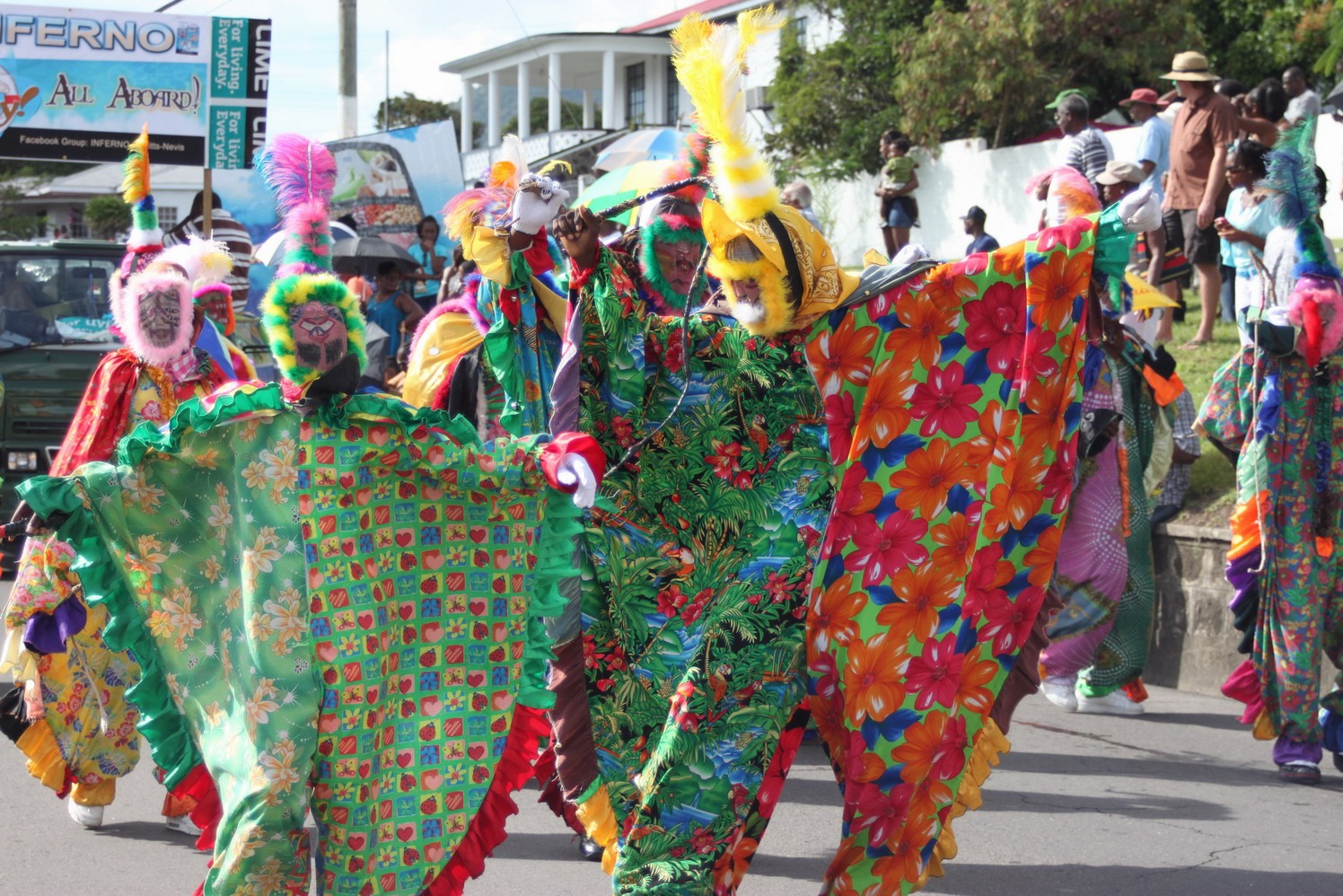
CLOWNS
are not the circus clowns. There is nothing funny about the St. Kitts clowns, actually most people used to talk about being scared by them. The Clowns are really a part of a much larger troupe that has now disappeared. It included the Japanese Girls and the Millionaires. Why the names were chosen is anybody’s guess now but it probably had something to do with their costumes. The millionaires wore an elegant white suit, They danced the cake walk with the Japanese girls. The girls carried the dainty parasols wore short skirts, and stockings. They put down their umbrella at the start of a dance probably to ensure they did not knock down anything as they danced inside the plantation house not the yard. When they were finished the clowns went into their routine which ended with the frenzied cracking of whips.
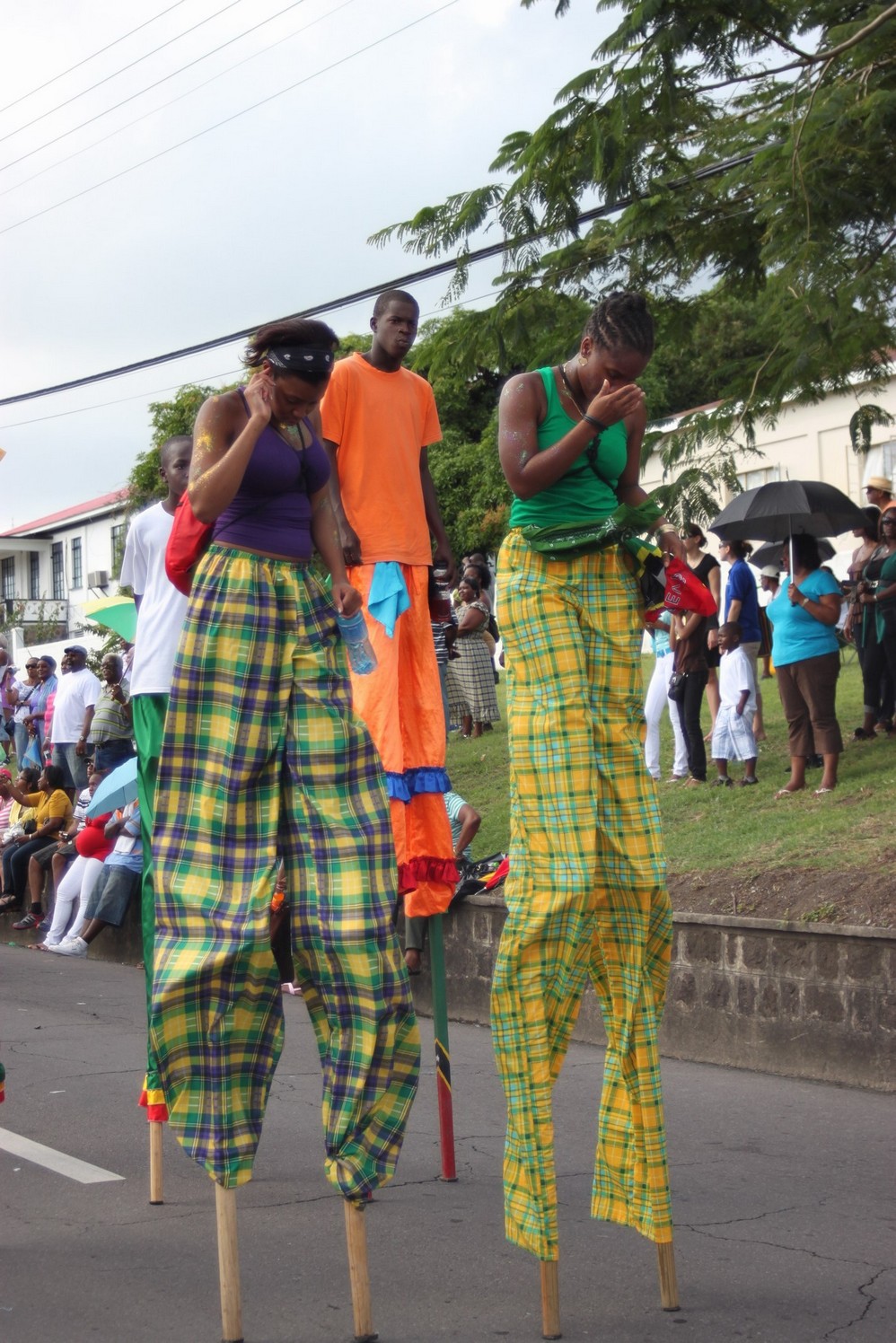
MOKO JUMBIE
has always been a popular troupe. It consists of stilt walkers who perform above the head of the crowd. Stilt walkers show up in both European and African cultures. Once it was an all male group but that has changed now. Its costume consisted of a long gown and a tapering conical head dress. Again there are numerous variations on this now. Stilt walking can be found worldwide. It had some very practical applications like allowing shepherds watching flocks of sheep to extend their field of vision, or to get over flooded ground.
The meaning of the name is uncertain. There is the story told in Mills and Jones Hendrickson of the sukinaw a jombie vampire who took refuge in the macaw tree. But we must also keep in mind that some of the people who were brought to St. Kitts were of the Moco ethic group. According to Professor Maureen Webster Lewis these were from the area of Old Calabar at the estuary of the Niger River in present-day Nigeria. The name is spelt Moco, Mocho, Moko. The people exiting from this area are likely to have been Kalabari, Ibibio, Igbo, Ijo. It is possible that the name derived from this particular group of people,
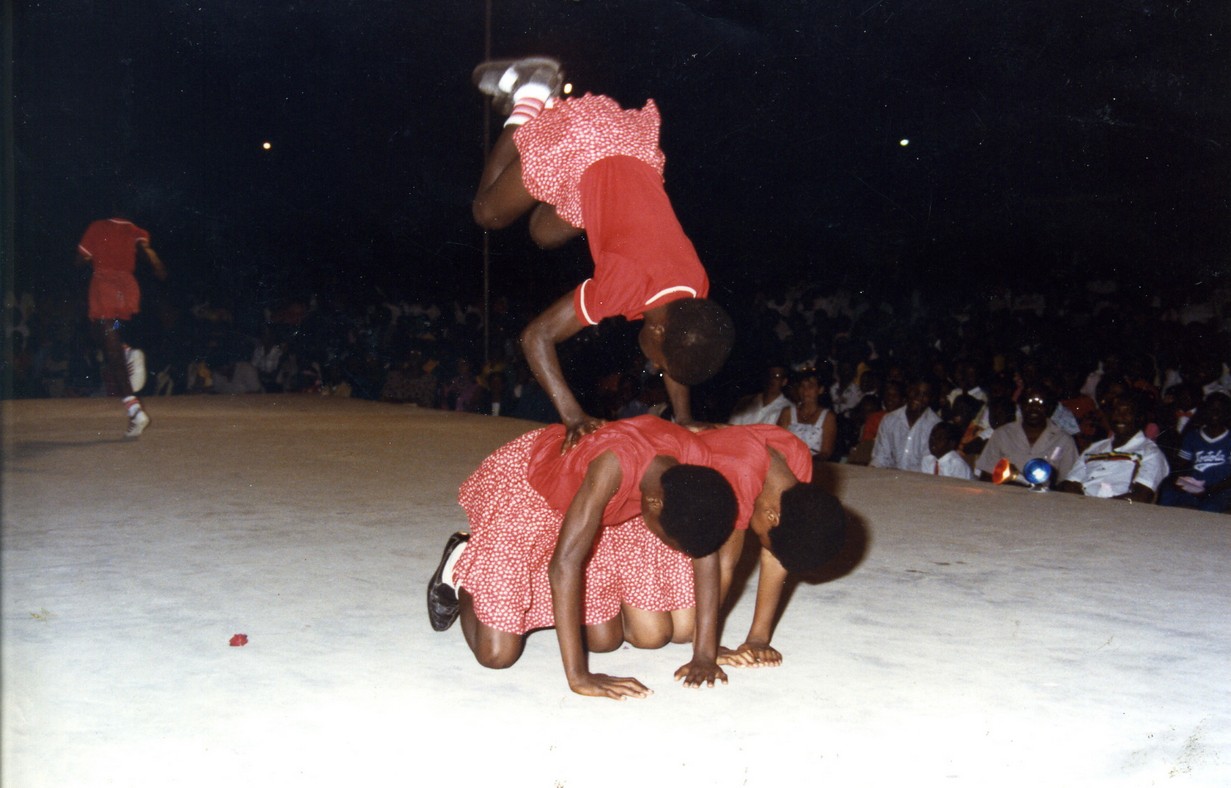
THE ACTORS
or acrobats are closely associated with St. Peters. It is said that they had their origins in the entertainments that Governor De Poincy encouraged at his castle at Fountain estate. One of the acts involves jumping over pitch forks. At one time this was carried by a man dressed in red and wearing horns. He was supposed to be the devil. This might be an association with Carnival in Catholic countries where it is claimed that it is the feast of the devil. The men in this troupe are said to be protected by lodestone, a magnetized mineral that was considered magical and used in protective amulets.
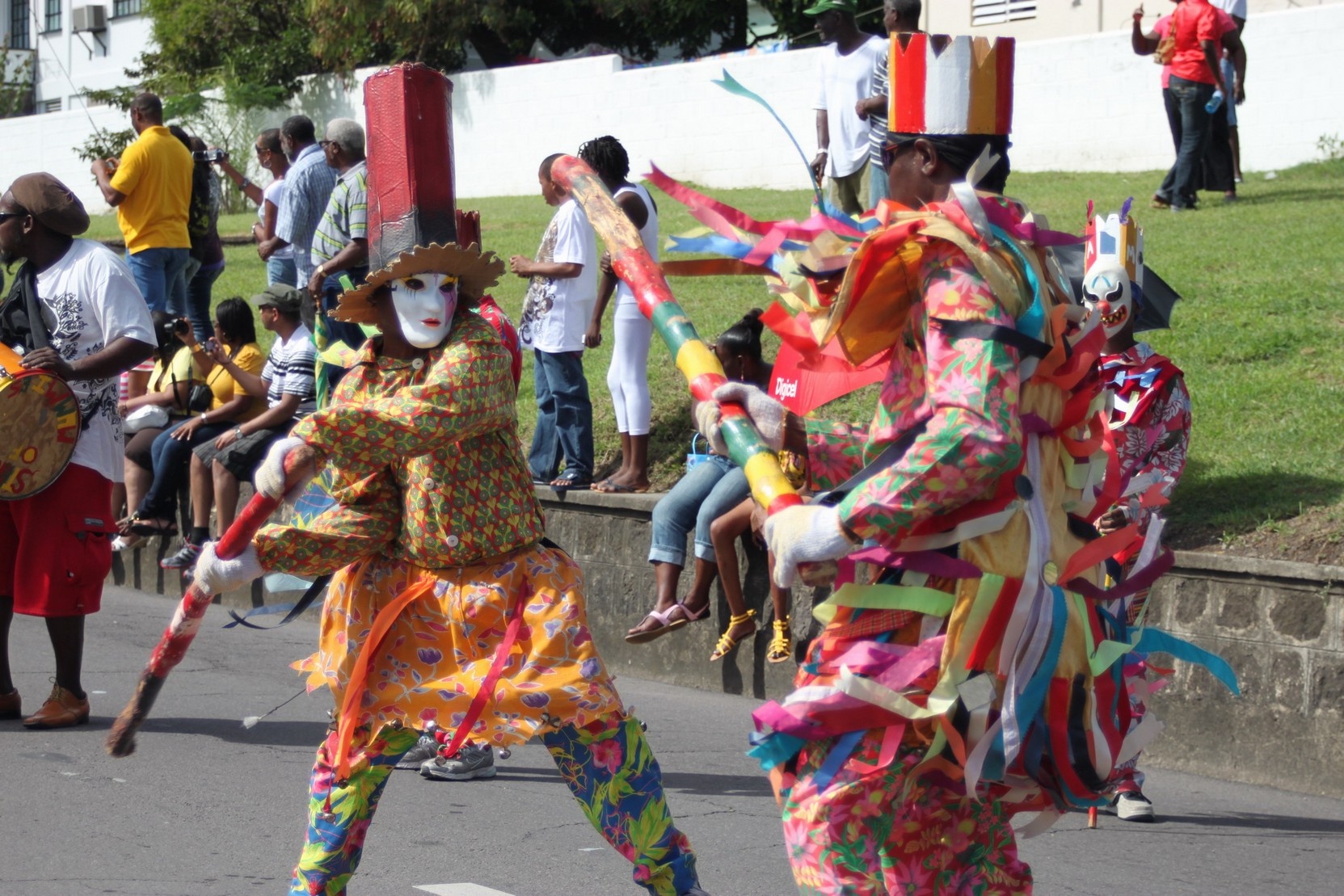
THE MUMMIES
had a cast of 13 characters which included the Captain or Fool, Saints David, Andrew, George and Patrick, Slasher, the Turkish knight, Hector, the Black Prince of Palestine and the Egyptian King, Giant or Dragon, Doctor and Woman. The name comes from the mummers once common around the English country side at Christmas and who made their way into the culture of the Caribbean and Newfoundland in Canada. In St. Kitts, this play consist of confrontations that end up in stick fights. The costumes have changed and now resemble those of the masquerade. The troupe is accompanied by fife and drum.
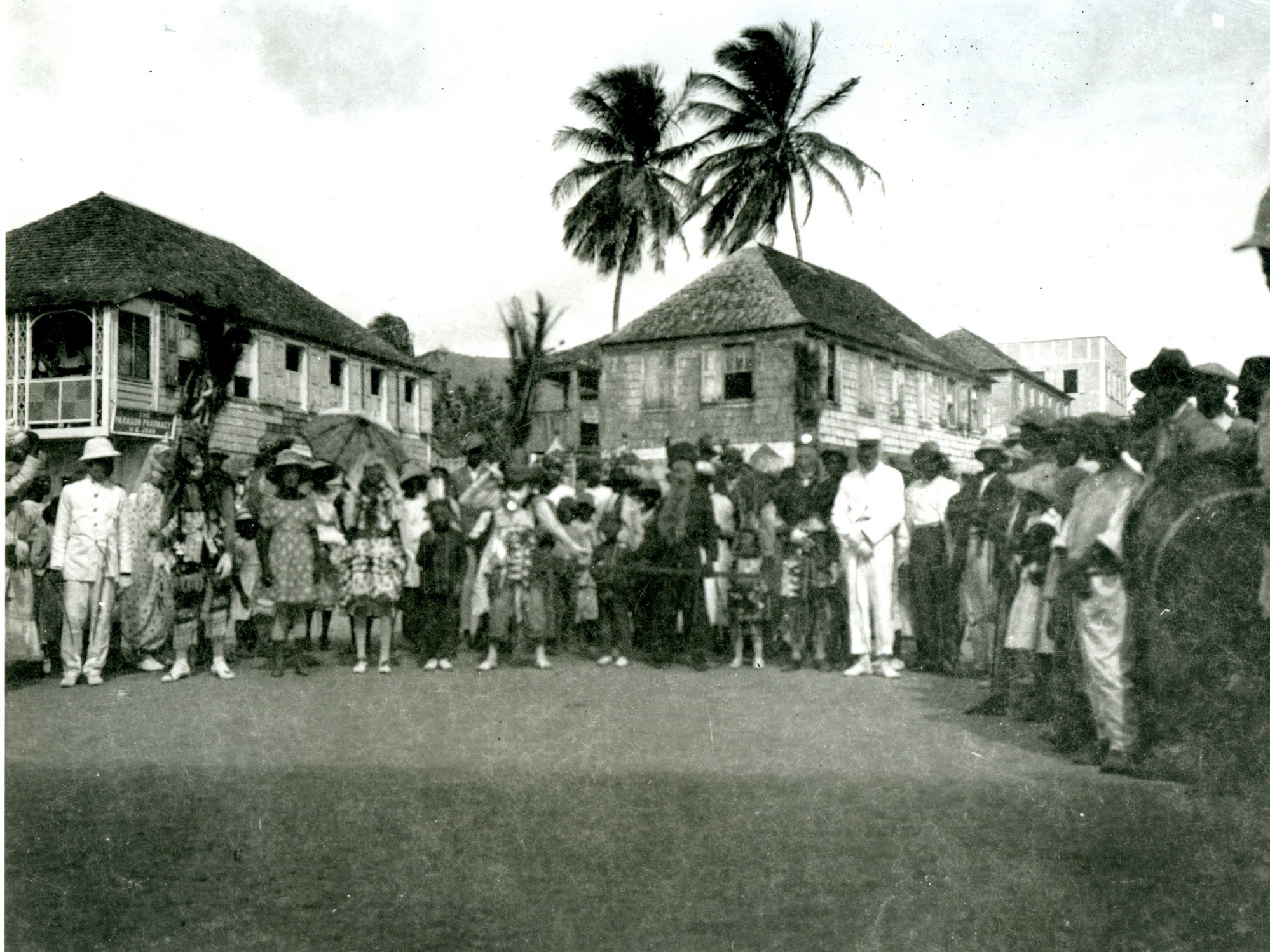
Sport that is no longer performed.
COWBOYS AND INDIANS
Like the Cakewalk these were inspired by American culture and based on the western movies that were making their way into the cinema, The Apollo was opened in the 1920s and had seating at different prices so that it quickly became a popular entertainment and a source of inspirations
NEAGA BUSINESS
found inspiration in the social faux pas of the upper classes. You had to be careful or you would be played at Christmas. The performers made fun of everybody and sometimes in very offensive ways to the extent that it became necessary for their scripts to be submitted for censorship and they had to have police permission to preform. This troupe no longer comes out at Christmas. To a certain extent their role was taken over by some very early calypsonians.
DAVID AND GOLIATH
is no longer performed. According to Mills and Jones-Hendrickson it was last seen in Sandy Point in 1965. This play was based on one written by Hanna Moore an 18th century English writer. In the version of the play in St. Kitts, the part of David was played by a boy who was usually under twelve years of age. David has most of the dialogue in the play and therefore it took quite a bit of dedication on the part of the boy to learn it. This may be one of the reasons why the play is no longer performed.
Good Friday
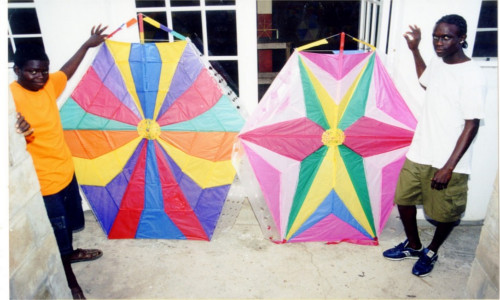
Good Friday is a quiet day in St. Kitts. Many go to the various church services that commemorate Christ’s Crucifiction . At home, there are hot cross buns for breakfast while lunch consists of cooked saltfish, mackerel, or fresh fish served with a mixture of starchy foods (potatoes, sweet potatoes, breadfruit, green figs, yams, cassava, dasheen, edoes) and greens. In St. Kitts, Good Friday and the rest of the Easter weekend is also the time for conkie.
For the young and the young at heart, the meals are there to provide the energy to fly kites. Kids will look for a place in their community where they can let their kite catch the breeze d soar. Families sometimes make a picnic of the traditional lunch and go find an open pasture or field where the children will have the space to raise their kites away from electrical wires and out of the line of incoming airplanes.
In the past men would help children build them from scratch, using very light wooden frames, newspaper and old clothes. Later, coloured tissue paper replaced the newspapers and the kites became prettier. The tail of the kite continued to be made out of old clothes or strips of sheets that had seen better days. A good tail was essential to help the kite fly well.
Then it was all a matter of finding a spot to catch the breeze that will take it as high as the string would permit. Some kids try the neighbouring streets. With electrical wires around they rick losing it very quickly. The best places are open pastures away from the airport. If the wind is good, a kite could fly for a long time with little need to mind it. That would be the time to start a friendly game of cricket. But you must always be careful that there isn’t somebody else with a kite that is ready to fight yours!!!!
National Archives
Government Headquarters
Church Street
Basseterre
St. Kitts, West Indies
Tel: 869-467-1422 | 869-467-1208
Email: NationalArchives@gov.kn
Website: www.nationalarchives.gov.kn
Follow Us on Instagram

